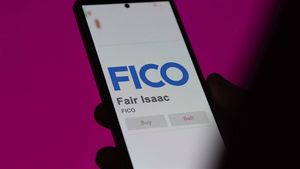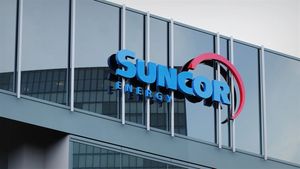
Affordable single-family home construction company LGI Homes (NASDAQ: LGIH) met Wall Street’s revenue expectations in Q2 CY2025, but sales fell by 19.8% year on year to $483.5 million. Its non-GAAP profit of $1.36 per share was 3.8% above analysts’ consensus estimates.
Is now the time to buy LGIH? Find out in our full research report (it’s free).
LGI Homes (LGIH) Q2 CY2025 Highlights:
- Revenue: $483.5 million vs analyst estimates of $481.4 million (19.8% year-on-year decline, in line)
- Adjusted EPS: $1.36 vs analyst estimates of $1.31 (3.8% beat)
- Adjusted EBITDA: $39.61 million vs analyst estimates of $35 million (8.2% margin, 13.2% beat)
- Operating Margin: 8.2%, down from 11.2% in the same quarter last year
- Backlog: $322.5 million at quarter end, down 41.8% year on year
- Market Capitalization: $1.42 billion
StockStory’s Take
LGI Homes’ Q2 results were met with a positive market response, as the company delivered profitability above Wall Street’s expectations despite a year-on-year decline in revenue. Management attributed this to a careful balance of financing incentives and selective price increases in stronger communities, as well as diligent cost controls and improved advertising efficiency. CEO Eric Lipar highlighted that, “Our financial results demonstrate our success in maintaining profitability by offering compelling but balanced financing incentives and offsetting their impact by raising prices in higher performing communities.” The management team also cited the incremental profit achieved from self-developed lots as a key factor supporting margins, even as operating leverage decreased relative to last year.
Looking forward, LGI Homes' guidance is shaped by a cautious approach to inventory and community expansion, with management flagging continued affordability challenges for entry-level buyers due to higher mortgage rates and elevated monthly payments. CEO Eric Lipar explained that the company will lean more heavily on incentives and smaller product offerings to improve sales pace, stating, “We are 100% focused on pace...affordability is what’s driving the lower absorption pace.” The company intends to moderate housing starts and manage inventory closely to align with muted but improving demand trends observed in late June and July, while remaining open to further adjustments as market conditions evolve.
Key Insights from Management’s Remarks
Management pointed to affordability pressures and a deliberate use of incentives as central to Q2 performance, while emphasizing the importance of inventory management and lead conversion.
-
Affordability challenges persist: Elevated mortgage rates and higher taxes and insurance costs have eroded purchasing power for LGI Homes’ target entry-level buyers. Management noted that this group, often at the lower end of the FHA spectrum, is “feeling the strain more than some of the other buyer segments.”
-
Incentives and pricing strategy: The company increased financing incentives and discounts, particularly on older inventory, while offsetting some of the impact through selective price increases in higher-performing communities. Lipar commented, “We are leaning into incentives, especially on the older aged inventory…still think our gross margin should be elevated compared to our peer groups.”
-
Advertising and lead conversion focus: Management redirected advertising spend to the most effective channels and stressed diligent follow-up on digital leads to convert interested buyers, supporting sales performance in a softer environment.
-
Wholesale channel utilization: LGI Homes expanded its use of the wholesale channel to balance completed home inventory, with nearly 18% of Q2 closings sold through this channel, up from 7% the year prior. This provided flexibility but also contributed to lower gross margins.
-
Inventory and land management: The company moderated home starts and focused on reducing finished inventory through targeted sales and incentives, aiming to maintain a 6 to 7 month supply. CFO Charles Merdian noted that excess completed homes would be worked down in coming quarters to align with sales pace.
Drivers of Future Performance
Management expects affordability and demand trends, along with inventory discipline and a focus on incentives, to shape LGI Homes’ performance in the upcoming quarters.
-
Affordability-driven demand recovery: Management is closely monitoring mortgage rate movements and believes any sustained decline could help unlock buyer demand, especially among first-time purchasers. However, persistent affordability challenges may continue to limit absorption rates in the near term.
-
Incentives and product adaptation: The company plans to rely on increased incentives and the introduction of smaller or more affordable home designs to stimulate sales, with CEO Lipar emphasizing efforts to “drive rates lower and prices as much as we can while protecting that margin.”
-
Inventory and leverage management: LGI Homes will control housing starts and align inventory levels with actual sales trends to avoid excess supply, with a particular goal of reducing leverage and maintaining a healthy balance sheet. Management indicated that for every 500 units of reduced inventory, about $100 million in capital could be freed up for debt reduction or share repurchases.
Catalysts in Upcoming Quarters
Looking ahead, the StockStory team will be monitoring (1) the effectiveness of LGI Homes’ incentive programs in stimulating absorption rates, (2) the pace of inventory reduction and its impact on leverage and cash flow, and (3) the rollout of more affordable and smaller home products. Signs of improving demand or a measurable shift in mortgage rate trends could also play a significant role in shaping the company’s near-term trajectory.
LGI Homes currently trades at $61, up from $54.57 just before the earnings. Is the company at an inflection point that warrants a buy or sell? The answer lies in our full research report (it’s free).
Stocks That Trumped Tariffs
Donald Trump’s April 2025 "Liberation Day" tariffs sent markets into a tailspin, but stocks have since rebounded strongly, proving that knee-jerk reactions often create the best buying opportunities.
The smart money is already positioning for the next leg up. Don’t miss out on the recovery - check out our Top 9 Market-Beating Stocks. This is a curated list of our High Quality stocks that have generated a market-beating return of 183% over the last five years (as of March 31st 2025).
Stocks that made our list in 2020 include now familiar names such as Nvidia (+1,545% between March 2020 and March 2025) as well as under-the-radar businesses like the once-micro-cap company Kadant (+351% five-year return). Find your next big winner with StockStory today.
StockStory is growing and hiring equity analyst and marketing roles. Are you a 0 to 1 builder passionate about the markets and AI? See the open roles here.





